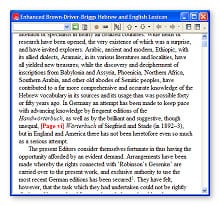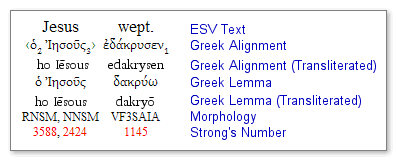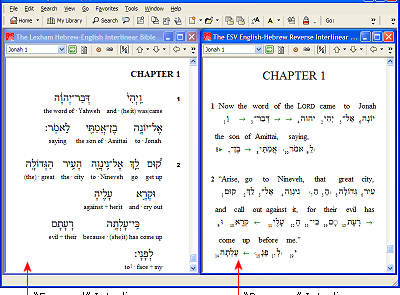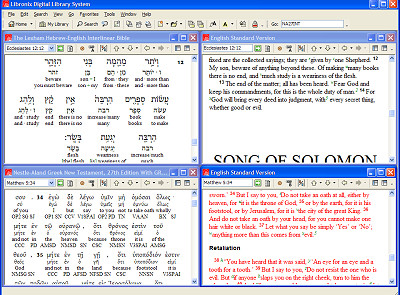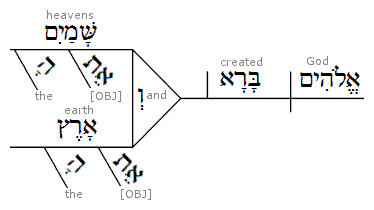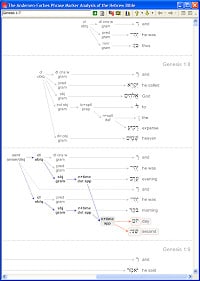This is not an obituary for Francis I. Andersen, Hebrew scholar and coauthor of the Andersen-Forbes syntax database of the Hebrew Bible, who passed away last month. If you’re unfamiliar with his life and achievements, the Christianity Today obit or...
You wouldn’t know just by looking at it, but Logos 6 represents a giant leap forward for Logos Bible Software. When we sat down to design Logos 6, we wanted it to be the same, but different. It’s always important in design to maintain a balanced...
First, we acquired rights to the Conchillos Ugaritic databank. Then, we acquired the rights to produce several Ugaritic textbooks, grammars, and other helps as well. We put together a product. Then we had to figure out how to support Ugaritic. [Cue...
Daniel Foster just came to me and said, “Hey, I didn’t know that the Andersen-Forbes Analyzed Text has two resource-specific visual filters!” I said, “Sure, I thought everybody knew that.” Well, if Daniel doesn’t...
Several readers have requested that we produce more examples of syntax searching. Your wish is my command — at least in this case. I made a video that shows how to make a syntax search to find all the places in the Hebrew Bible where an animal...
(See also: RevInt I: Reverse Interlinears as Books and RevInt II: Reverse Interlinear Lines and RevInt III: Reverse Interlinear Symbols) Occasionally, when I assemble a piece of furniture — say for instance a “Jerker” desk from Ikea, like the one...
(See also: RevInt I: Reverse Interlinears as Books and RevInt II: Reverse Interlinear Lines) There are quite a lot of symbols that you need to master in order to read a reverse interlinear alignment. Each of the symbols is has a popup definition in...
(See also: RevInt I: Reverse Interlinear Resources) You can profitably use a reverse interlinear by just reading it. I’ll look into some of the ways that Reverse Interlinears can be used in later posts, but first let’s just look at all the lines of...
Some of my favorite new Logos Bible Software 3 (LBS3) resources are the new reverse interlinear Bibles (after Hebrew Syntax, of course) — and not just because I worked on them. A reverse interlinear in LBS3 is many things: It’s a Bible version that...
The ink-on-pressed-tree-pulp-wrapped-in-calfskin one, that is. Nowadays, I take my laptop with Logos Bible Software 3 instead. Sure, I raise a few eyebrows, but most everyone at church knows I work for Logos, and so they know (I hope) that I’m...
The other day I was in a feature design meeting for one of the new reports in the upcoming 3.0 release of Logos Bible Software, the Bible Word Study report. In attendance were a couple of Logos software developers, a few book designers and...
The Andersen-Forbes syntax data is now available as part of the Libronix DLS 3.0 beta. The syntax stuff is 200+ megabytes of data, so we’ve split it out into a separate beta download. Libronix DLS 3.0 Beta – Syntax addendum – Once...
I was recently dispatched to Melbourne to visit Frank Andersen and Dean Forbes. One of the things I was assigned to discover — other than what kangaroo chili tastes like* — was the underlying linguistic/textual/grammatical philosophy of the Andersen...
Consider the simple graph to the right. A graph, you will recall, is a diagram made up of labels and lines. This particular graph has some further special characteristics: (1) This is a directed graph, because the lines are arrows that indicate...
Why did we choose graphs to represent syntax instead of something else? Short answer: Because. The long answer, however, is much more interesting: Because every method of graphically showing the syntactic form of a sentence or clause has its pros...
Good question. For mathematicians and linguists, a graph is a diagram that consists of nodes and edges. For the rest of us, who must communicate using words that we hope others will readily understand, graphs are diagrams that consist of points and...
You may have noticed I haven’t been blogging much lately. Mostly, I’ve been too busy working on the Andersen-Forbes Hebrew Syntax project. As part of that work, I recently went down to Melbourne, Australia to visit with Frank Andersen...
Part I Here’s another of Wendell Stavig’s questions to one of my earlier posts: What is a MARC record? MARC stands for Machine Readable Catalog, and is a Library of Congress standard way of specifying resource metadata, that is...
Wendell Stavig* posed some great questions in his comments to one of my earlier posts, and since my computer is bogged down running a conversion script that takes about forty-five minutes to run (top-secret project!) I’ll go ahead and answer...
When you are studying a word, it’s often a good idea to look at synonyms and antonyms for that word as well. For example, if you were studying the English word run, you might also want to consider how words like sprint, jog, or even gallop...
Rick wrote earlier about how you can go from a headword in one lexicon to another by right-clicking and executing a keylink from the headword. This is true, and a very useful feature. But I will show you a still more excellent way … Once you...




